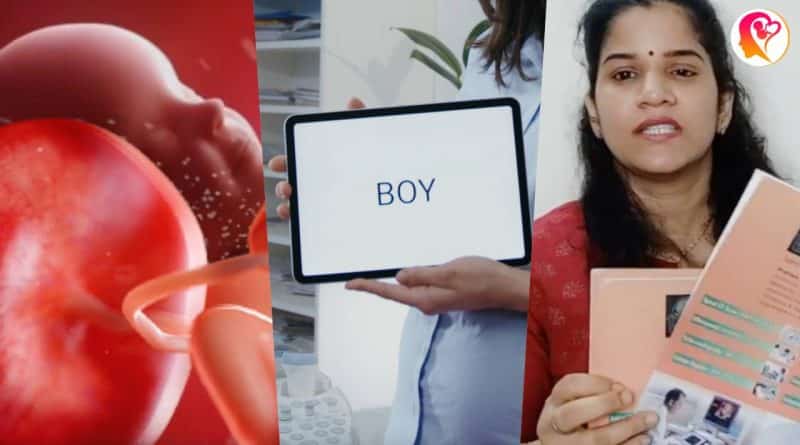Baby Gender Prediction In Womb From Posterior or Anterior Placenta
इस लेख को हिंदी में पढ़िए
Highlights of Article
Position of the placenta
There are two main positions of the placenta in the womb. One is the anterior placenta and the other is the posterior placenta. It is a common thought and belief that by these you can know whether you are pregnant with a boy or a girl.
What is placenta
The placenta provides oxygen and essential nutrients to the baby in the womb.
Anterior placenta is a condition of the placenta in which it is positioned towards the front of the uterus, closer to the mother’s abdominal wall. Posterior placenta is a condition of the placenta in which it is located at the back of the uterus, closer to the mother’s spine. Both these conditions are normal and there is no significant difference in the health or development of the baby whether the placenta is anterior or posterior.
Also watch :
Placenta and baby’s gender
It is believed that if the placenta is in anterior position, it indicates that the unborn baby will be a girl. On the other hand, if the placenta is located towards the back of the uterus, it is called a posterior position. In such a situation, it is believed that the child growing in the womb is a boy.
How is the placenta located
When a woman’s egg is fertilized, it implants itself in the wall of the uterus. It can be implanted anywhere in the wall, left side, right side, front, back, top or bottom. As the baby grows in the womb, the uterus also expands. When the baby begins to move, a change in the position of the placenta is possible.
Also Watch:
Decision
As mentioned earlier, the position of the placenta is not constant and can change during pregnancy. Therefore, using the position of the placenta to determine the sex of the baby is not accurate or reliable. It is important to focus on maintaining a healthy pregnancy and not worry about trying to predict the sex of the baby based on superstition or old wives’ tales. The only way to accurately determine a baby’s gender is through genetic testing or by identifying the baby’s physical characteristics during an ultrasound. It’s important to be happy and grateful for whatever the outcome is, and to focus on the health and well-being of both mother and baby.
If you liked this article please share it. Subscribe to garbhgyan.com. Thank you for reading.




